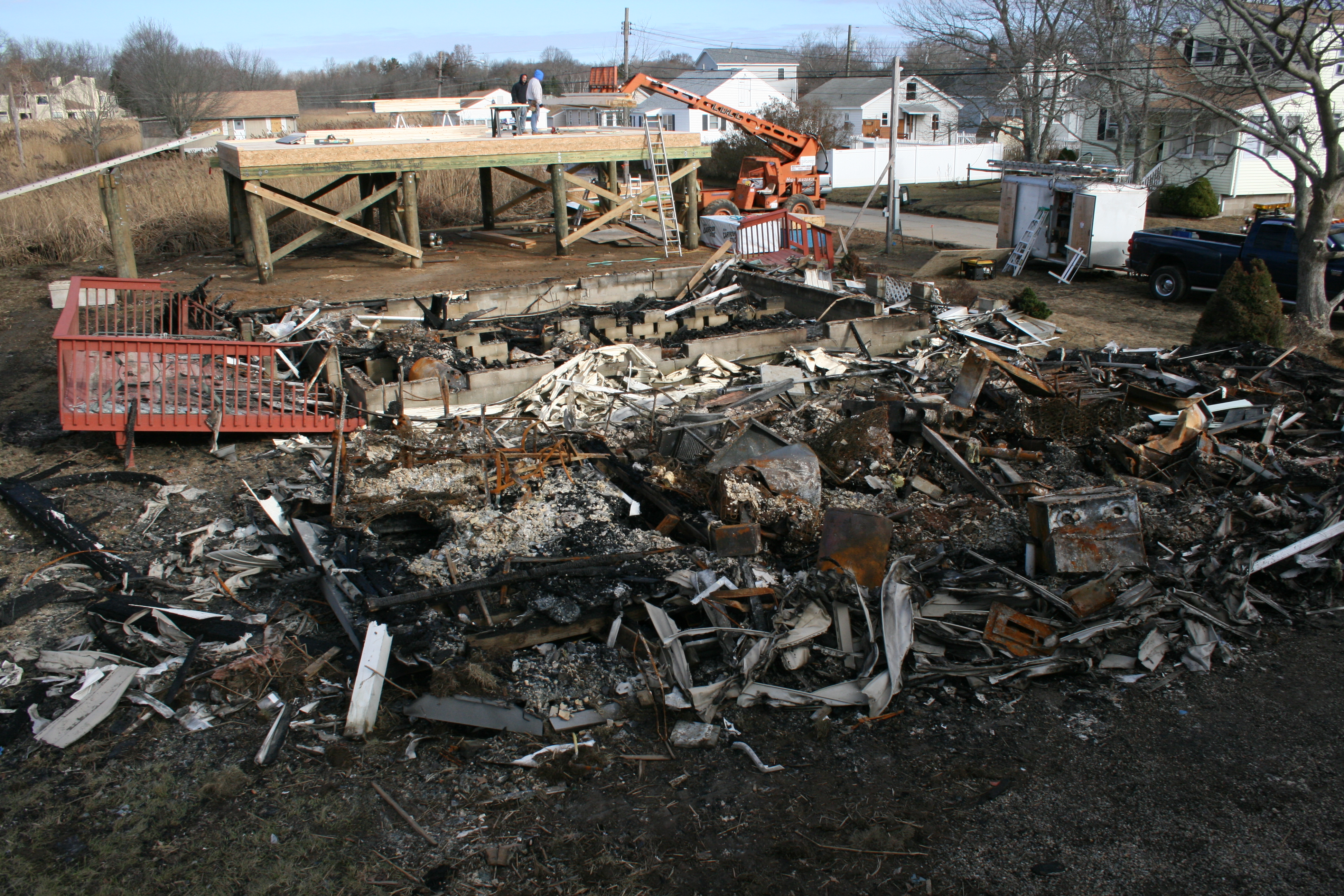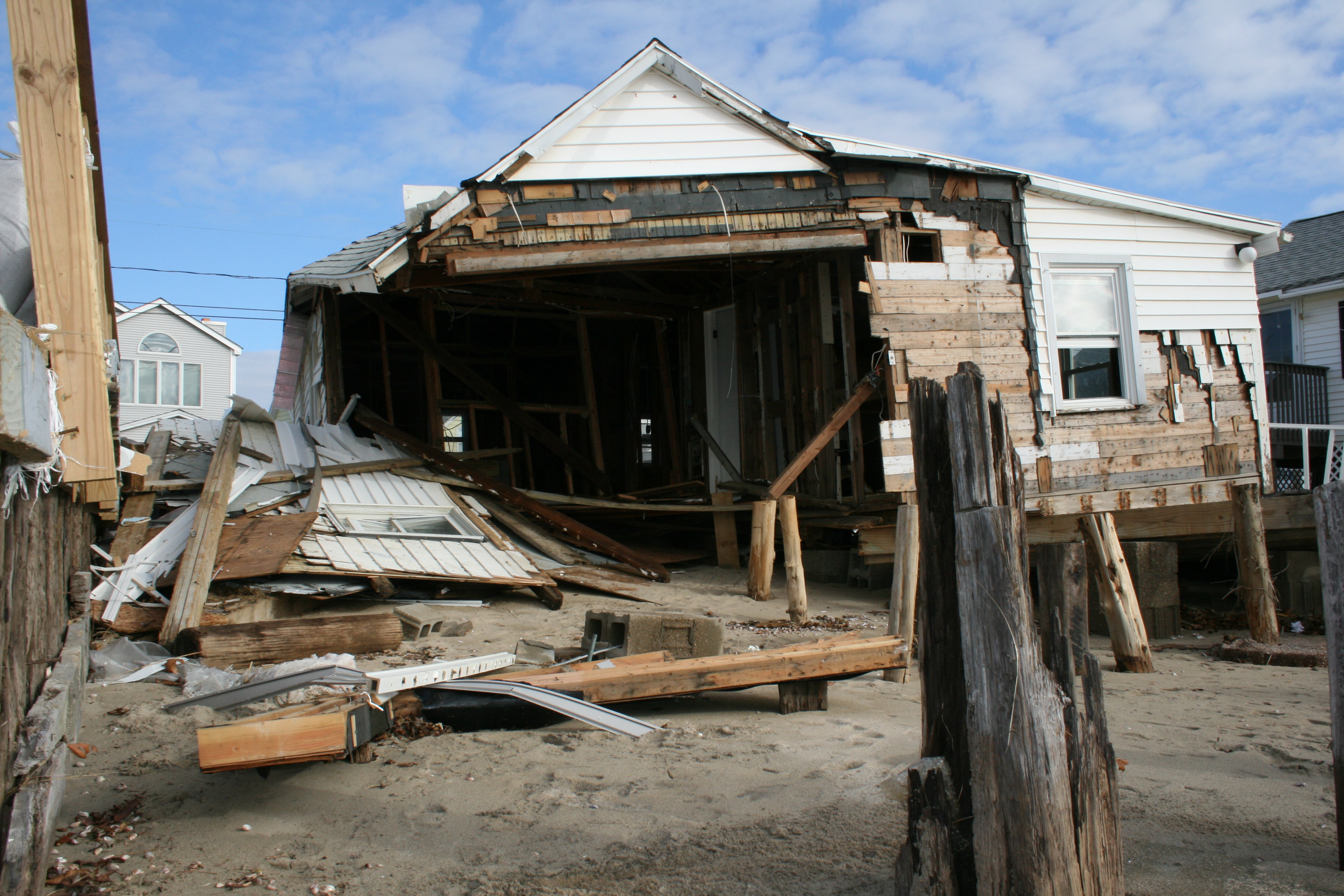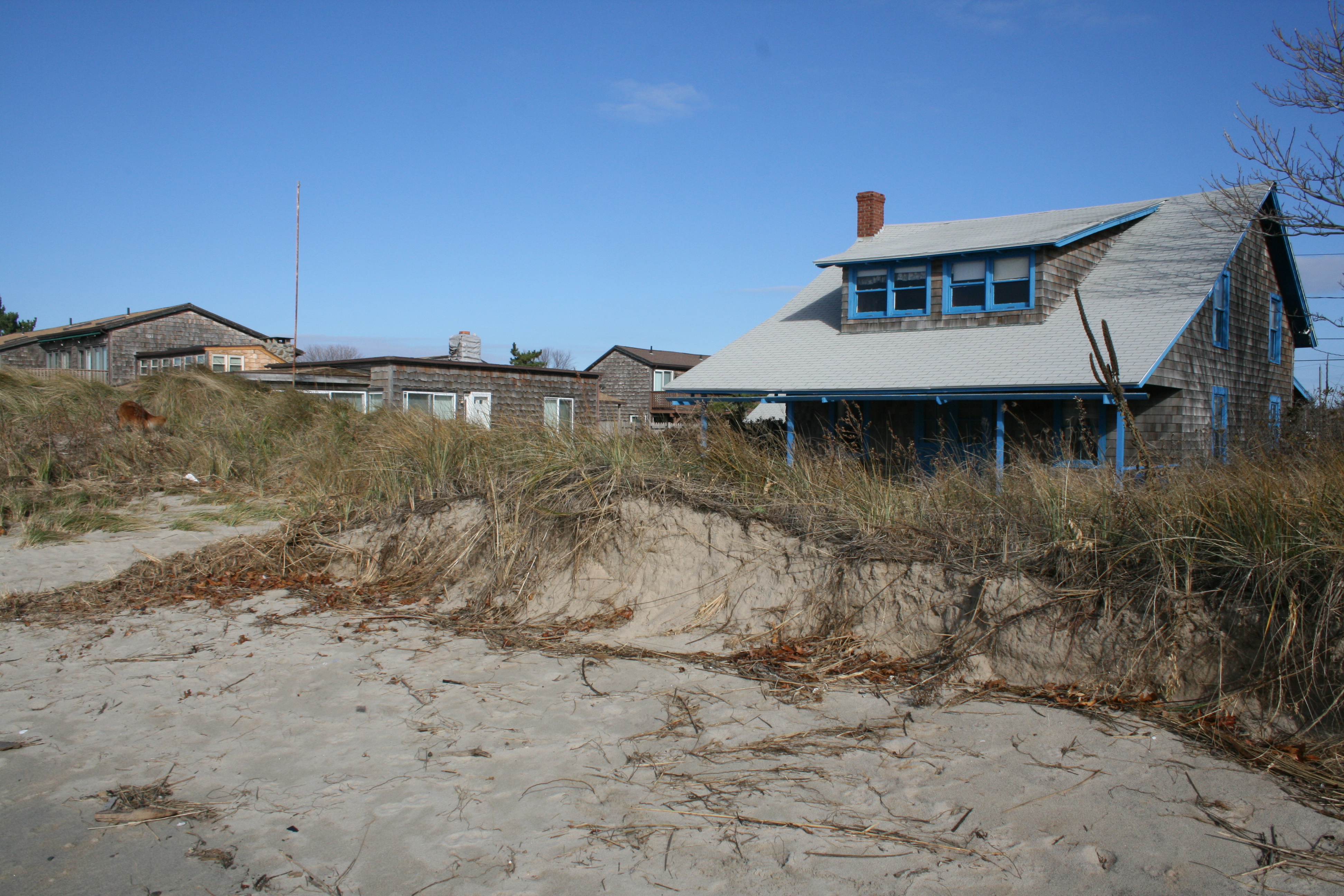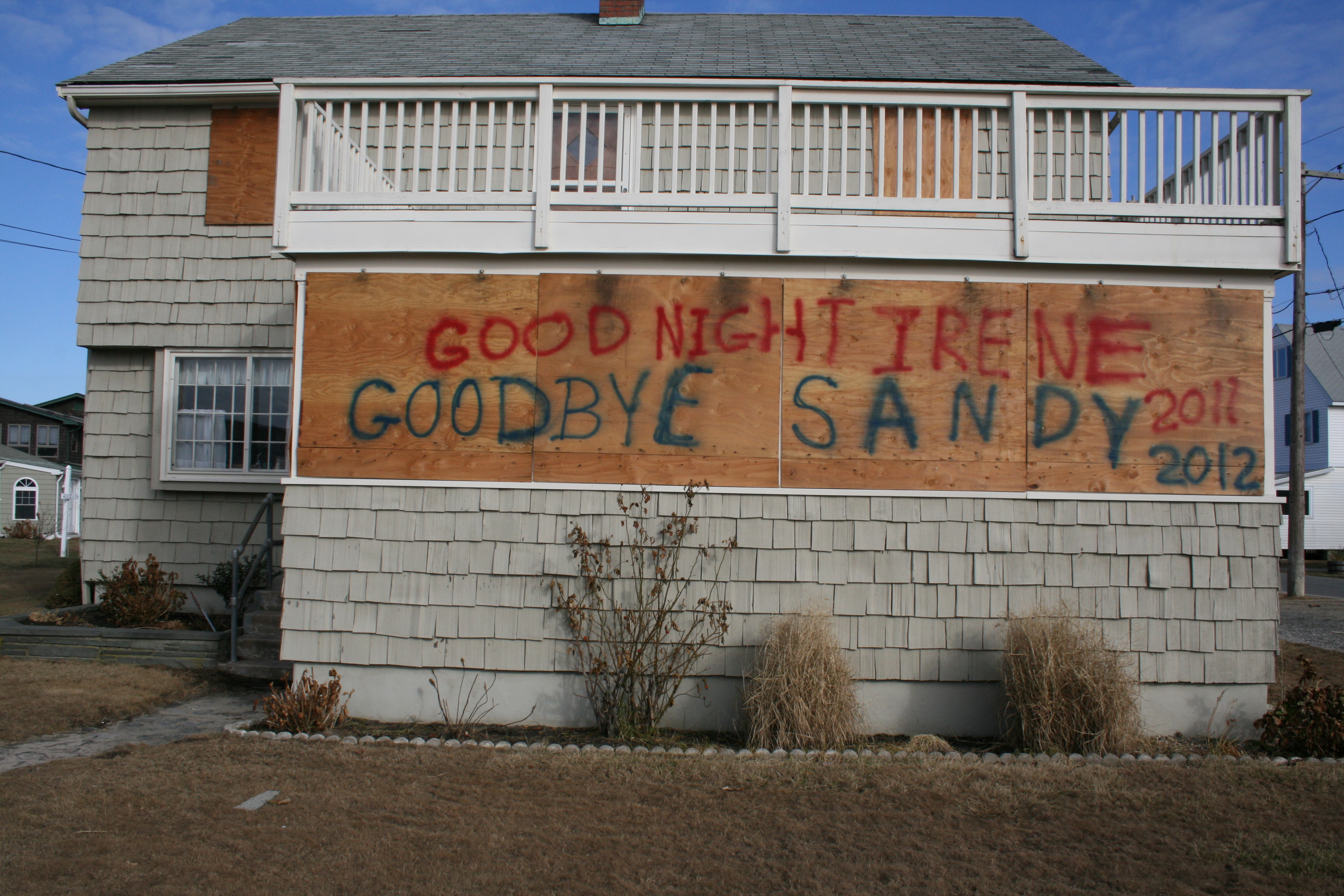Today, three weeks since Hurricane Sandy, Chalker Beach in Old Saybrook is busy with activity. I notice trucks with logos that contain the words “Septic”, “Contractor”, “Demolition”, and “Electrical” motor past as they head to the shoreline area. Dumpsters with overflowing sheetrock and debris are parked in numerous driveways, and many homes bear the placard “Keep Out: Uninhabitable”. The sounds of pounding hammers and buzzing saws permeate the neighborhood.
I walk over to the street where two houses had burned down during the storm. Fortunately, no one was hurt. Peering into the rubble, I spot the charred remains of the family bicycles, now contorted in odd shapes.

“Compared to Irene, Sandy brought much more water into Chalker Beach”, remarks Ann Webster, a 14 year resident, standing next to the remains. “What scares me most is the fact that our fire trucks and emergency vehicles could not make it to the burning homes because of the six-and-a-half foot water levels.”
Along the waterfront, homes located at the apex of the crescent moon-shaped beach area were hardest hit by Sandy’s huge waves. Several older homes were knocked off their short cedar-post footings, and the sides facing the Sound had imploded. I cannot help but feel sorrowful for those who had just rebuilt their homes the year before.

Then, I walk to the one beachfront home still fronted by a pair of large dunes and set back from the waterfront, unlike its neighbors. It appears that the home received minimal damage, if any at all. Although the dunes had been shorn in half by Sandy’s wave action, it looks as if the dunes and their accompanying vegetation played a major role in protecting and softening the impact of the storm.

My landlord, Richard Hotchkiss, who summered at Chalker Beach as a child in the 1950’s, gives me a phone call to get an update and recalls, “The last time water came around our cottage was in 1954 during Hurricane Carol. I was told that in the big hurricane of 1938 cottages were completely leveled on what is now our beach area.”
I think to myself. How long can we keep rebuilding directly on the Sound? Especially in the face of climate change and sea level rise?
Posted by Chris Cryder, outreach associate for CFE/Save the Sound

